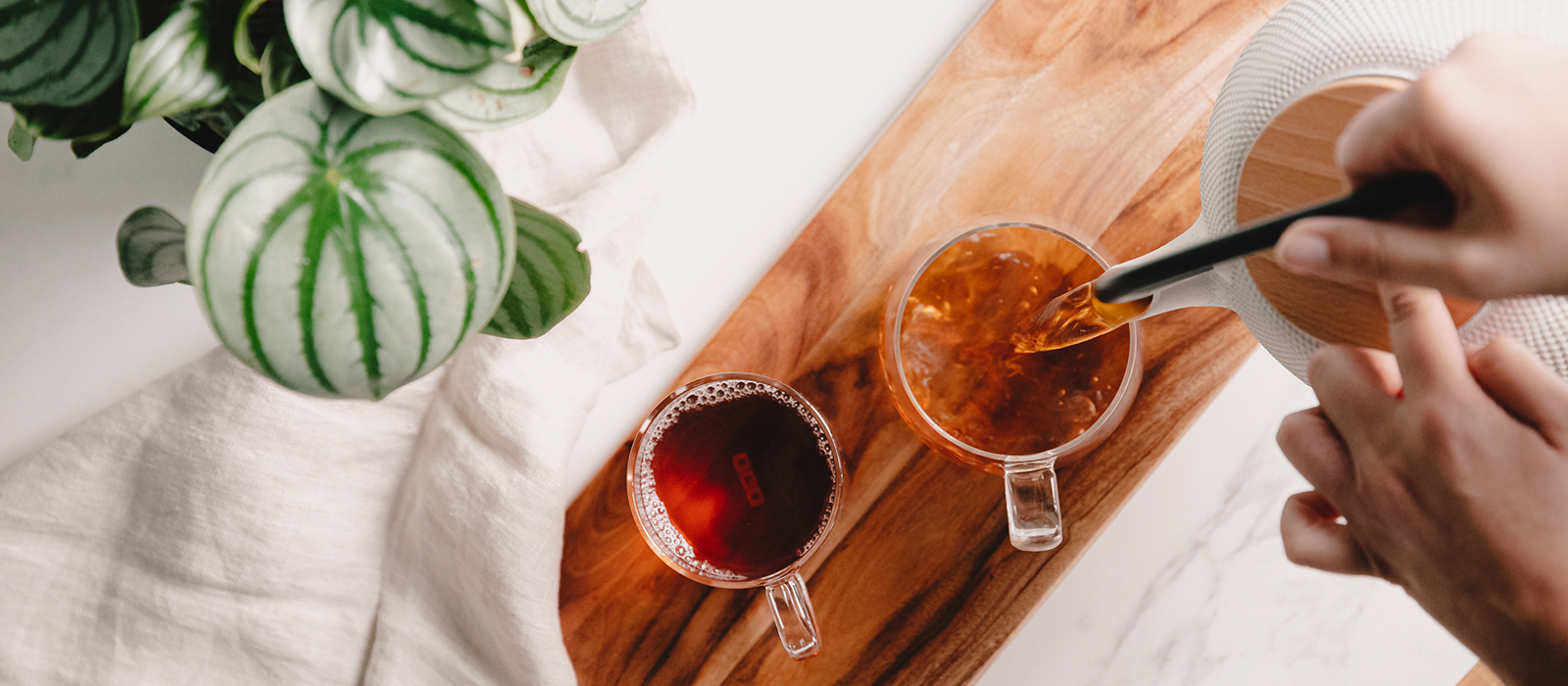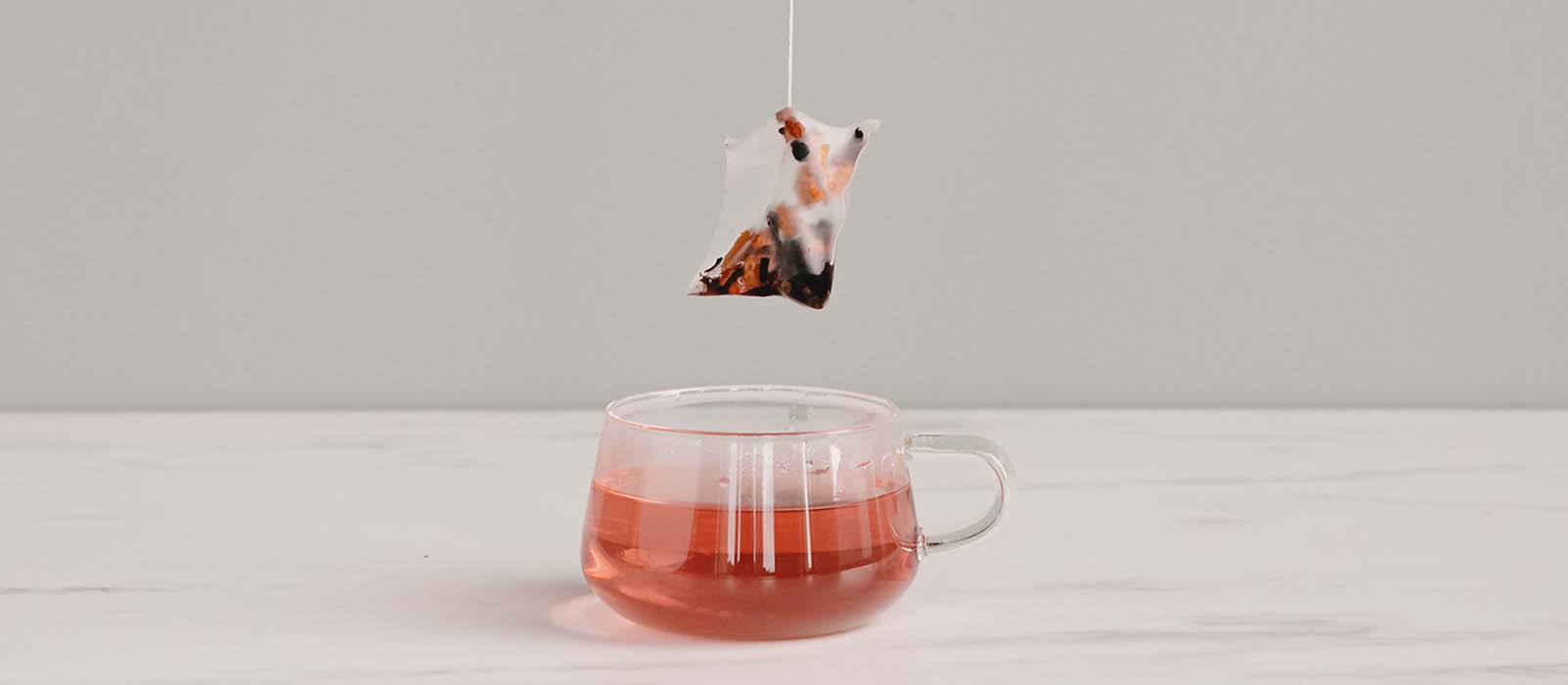
- Home
- Discover all about how to make tea and enjoy tea rituals

Discover all about how to make tea and enjoy tea rituals
Written by Alice
Reading time 5 minMaking a cup of tea may seem like a simple task, but unlocking the full potential of your tea leaves requires a bit more care and knowledge. Whether you’ve been a tea drinker all your life or are just starting to discover it, understanding how to make tea and brew it properly can truly bring out the best in every cup. Here’s a comprehensive guide on how to make tea, combining the essentials of brewing and savouring this iconic drink.
How to make tea at home?
Choosing the right water
Your tea’s quality starts with the water you use. Just as the first written records of tea from 780 AD emphasized, fresh water is crucial: “The best water is that which drips from the stalactites and flows gently on a bed of rock.”
For the best results, use filtered water or spring water that is neutral in pH—neither too hard nor too soft. Avoid mineral waters high in salts, as they can alter the taste. The purer the water, the more the tea’s natural flavours can shine.
Selecting Your Tea
When it comes to choosing tea, loose-leaf tea is often preferred for its quality. However, tea bags are convenient, offering pre-measured amounts that make brewing simple.
Loose tea leaves
If you want to start learning more about tea tasting, loose-leaf teas work best. Experts in the field will tell you there isn’t any other proper approach to drinking tea. Because loose tea leaves are less damaged than those in tea bags, they are typically of a higher calibre. Loose tea leaves are less processed and are full of intense flavours and scents. They also better retain all the positive qualities and health advantages of the tea. So, make sure, to select premium loose tea.
Tea bags
Tea bags’ primary benefit is their ease of use. All you need to do is add water to get the right amount of tea, which has already been calculated. Furthermore, unlike a box full of loose tea, this small bag is easily portable! You probably already know that tea bags are quite practical.
However, because the bags are sealed tight, unlike loose tea, you cannot be certain of the quality or the size of the leaves. Having said that, there are certain brands whose tea origin and quality are quite reliable.
Whatever the type of tea you’re looking for, MaxiCoffee has what you need.
Choosing the right temperature
The temperature of your water is another vital factor in brewing tea. Different types of tea require different temperatures, with some kneading boiling water and others much cooler water.
- Black teas: 85-90°C
- Oolong teas: 85-90°C
- Green teas: 75°C
- White teas: 70°C
- Herbal teas: 100°C
- Rooibos teas: 95°C
- Hibiscus teas: 95°C
If the water is too hot, it can scald the tea leaves, resulting in a bitter taste. If it’s too cool, the flavours may not fully develop. Consider using a thermometer or a smart kettle with adjustable settings to ensure precision.
Enjoying your tea
Once the tea has infused, it’s time to serve. Remove the tea bags if you’re using them, to prevent over-infusing. For loose-leaf tea, you can pour the tea through a strainer. Whether you prefer your tea plain or with additions like milk, sugar, or lemon, the key is to enjoy the experience. In the UK, adding milk to tea is a common practice, while in other cultures, tea is often sweetened or served with specific accompaniments.
The ritual of drinking tea
Drinking tea is more than just quenching your thirst; it’s a sensory experience. Start by inhaling the aroma before taking a sip. Notice the flavours as they unfold on your palate, whether they are sweet, bitter, or umami. Each type of tea has its own character, which can be enhanced by how it’s prepared and served. In Morocco, for instance, green tea is sweetened and served with mint, while in Russia, tea is often brewed in a samovar and sweetened with jam or honey.
Remember to explore
There’s a world of tea to explore, from black teas and green teas to white teas and oolong teas. Each type offers unique flavours and health benefits. Black tea, for example, is known for its rich, robust flavour, while green tea is celebrated for its delicate taste and antioxidant properties. White tea, the least processed, offers a subtle, light flavour.
A few optional accessories
To achieve complete control over the balance of the drink, you can get your hands on a few essential tools. First, a variable temperature kettle is recommended for precise temperature control. Additionally, in many cultures, such as in Japan, it is common practice to use specific tea infusers for different types of tea, such as one for green tea and another for black tea. Beyond the basic equipment, consider incorporating one or more of the following tools:
- A teapot
- A thermometer to manage the temperature of your water
- Hourglasses to ensure the correct infusion time
- A storage container to keep the tea away from moisture or light
- A tea filter or infusion ball (essential if you’re using loose tea leaves)
When it comes to receptacles for your tea, the best one is, quite simply, whichever one you like the most. Try to steer clear of anything that might alter the taste of your drink like cardboard or plastic cups. For those with busy lifestyles or who are always on the go, an infuser mug can be a convenient solution. Simply fill it with tea and water, and it’s ready to use while you continue with your tasks. However, for those who prefer a more leisurely experience, consider selecting a teapot that allows the tea leaves to float freely, mix with the water, and gradually release their full aroma.
MaxiCoffee tasty tip
To prepare your tea, use boiled water and let it cool slightly before pouring it over your tea. This prevents burning the tea and preserves its delicate aromas.

The art of making and drinking tea is deeply personal. It’s about taking the time to savour the moment, whether you’re enjoying a quiet cup alone or sharing tea with friends. The process, from boiling water to the final sip, can be a meditative experience, allowing you to slow down and appreciate the finer things in life. So be sure to slow down, and enjoy!
Discover our other articles








